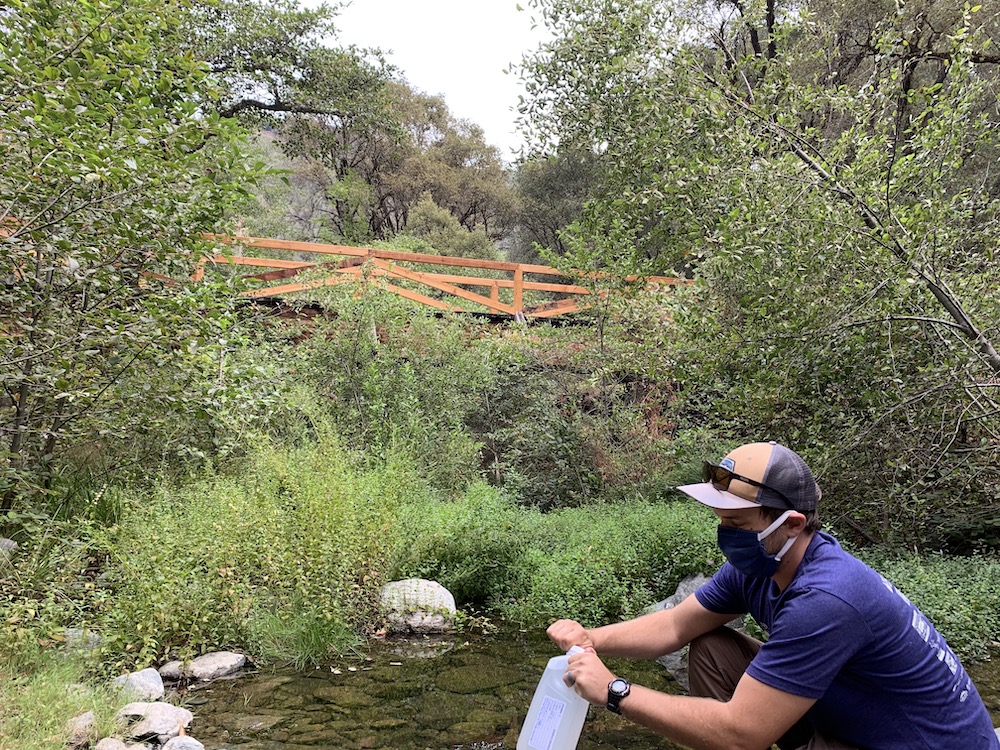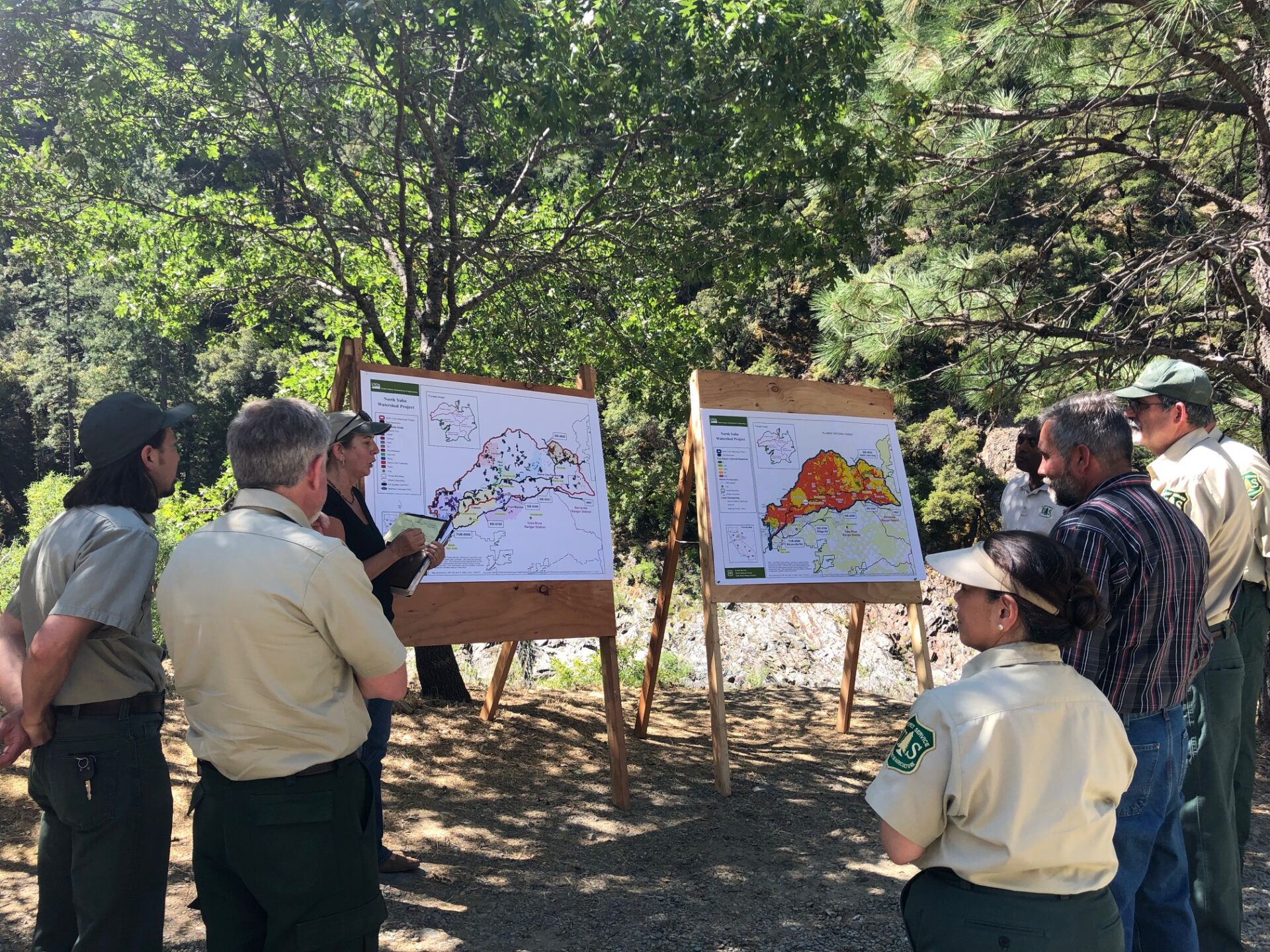SYRCL Receives Support to Build Forest Resilience & Assess Wildfire Impacts
California’s wildfires have repeatedly put the state in the national spotlight and had major impacts locally here in Nevada City as well. The Jones Fire swept across our watershed this past August, burning 705 acres, 14 homes, and forcing 4,000 people to evacuate. Well over 500 personnel were involved in containing the fire, along with 66 fire engines, and 2 helicopters over the course of 11 days.
SYRCL’s Watershed Science team is involved in efforts to foster forest resiliency to prevent future high-intensity forest fires and to catalogue the impacts of fire suppression techniques. This work is done in collaboration with many incredible partners, including volunteers as well as local, regional, and national organizations. In this article, we highlight recent support SYRCL has received for this important work.
North Yuba Forest Partnership
 The North Yuba Forest Partnership (NYFP) is composed of a collaborative group of nine organizations who are using the best available science and technology to plan and implement forest resilience and restoration treatments. They are doing so at an unprecedented pace and scale—275,000 acres!
The North Yuba Forest Partnership (NYFP) is composed of a collaborative group of nine organizations who are using the best available science and technology to plan and implement forest resilience and restoration treatments. They are doing so at an unprecedented pace and scale—275,000 acres!
On February 16, The Yuba Water Agency’s board committed $500,000 to this important work, as it is essential to safeguarding communities, water supplies, jobs, recreational spaces, biodiversity, and cultural resources. This grant will allow SYRCL and its partners to complete environmental documents and permitting for the wider NYFP area and field surveys for the first 20,000 acres of treatment areas.
“The partnership’s shared-stewardship approach prioritizes reducing catastrophic wildfire risk for people and property by focusing on treating areas that have the potential to prevent a wildfire from spreading to higher-risk areas,” said Melinda Booth, SYRCL’s Executive Director.
The work the NYFP is embarking upon is essential to the health of our watershed as well as the human and non-human communities that call it home and those who travel to visit our beautiful forests and rivers. Healthy forests aid in everything from habitat preservation to carbon sequestration. This is part of why we are committed to creating a healthy forest that benefits the local and the global.
Learn more about who our partners are and what the NYFP is doing here.
If you want to get more involved, check out these opportunities. The NYFP is seeking an Interdisciplinary Lead Consultant as well as a consultant to perform an Archeological Sensitivity Model.
Post Jones Fire Water Quality Monitoring
On February 11, California State Parks Foundation awarded $135,000 to 15 state parks and park partners to help parks recover from the devastating 2020 wildfires. SYRCL was one of the awardees.
“The 2020 California wildfires were horrifically destructive, and our beloved state parks have undergone devastating damage. There is a real need to restore fragile habitats and rebuild parks, while building climate resiliency to mitigate the impact of climate change,” said Rachel Norton, Executive Director of California State Parks Foundation.
California State Parks Foundation funding will provide the ability to conduct water quality monitoring in the areas impacted by the Jones Fire. This data will help to determine how fire suppression techniques, including vegetation removal and the use of fire retardant, impact water quality in Rush Creek and the South Yuba River and aid State Parks in managing the potential negative impacts of fire suppression efforts, including algae blooms associated with increased phosphorous and ammonia from fire retardant and increased sediment in the river.
 SYRCL’s Hydrologist, Karl Ronning, will lead the sampling effort. Ronning has six years of experience conducting hydrological monitoring and guiding teams of citizen scientists to help gather valuable data for the Yuba watershed. In addition to informing fire suppression techniques, this new California State Parks Foundation funded research complements SYRCL’s 20 years of river monitoring by gathering more in-depth water quality data at three long-term sites already established around Jones Bar. Additionally, this funding will help inform first-flush conditions (the conditions right after the area’s first large rain events) to help determine how quickly the watershed can dilute elevated bacteria levels in the South Yuba.
SYRCL’s Hydrologist, Karl Ronning, will lead the sampling effort. Ronning has six years of experience conducting hydrological monitoring and guiding teams of citizen scientists to help gather valuable data for the Yuba watershed. In addition to informing fire suppression techniques, this new California State Parks Foundation funded research complements SYRCL’s 20 years of river monitoring by gathering more in-depth water quality data at three long-term sites already established around Jones Bar. Additionally, this funding will help inform first-flush conditions (the conditions right after the area’s first large rain events) to help determine how quickly the watershed can dilute elevated bacteria levels in the South Yuba.
To learn more about the data collected after first-flush conditions, check out these recent articles.
If you would like to learn more about becoming a River Monitor, visit the information page here.
Did you enjoy this post?
Get new SYRCL articles delivered to your inbox by subscribing to our ENews.



